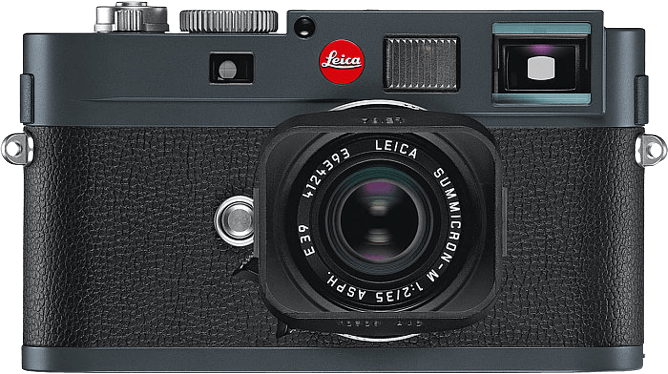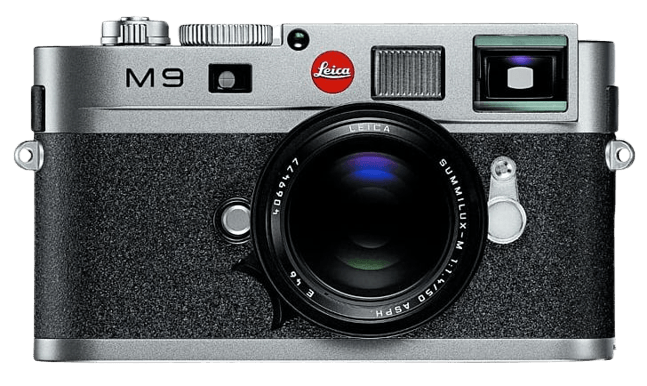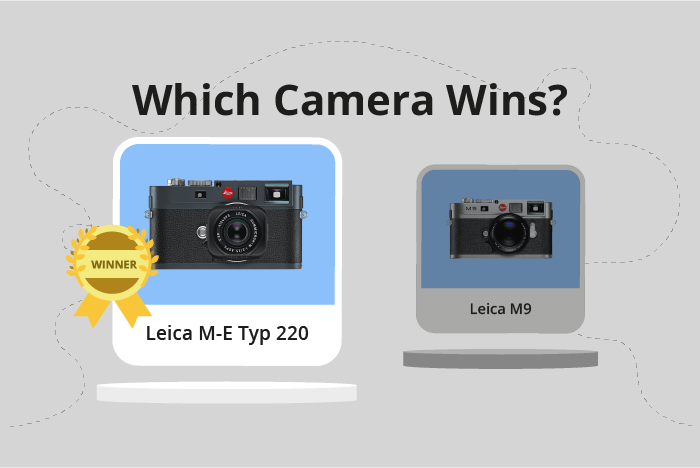Leica M-E Typ 220 vs M9 Comparison
Leica M-E Typ 220

Leica M9

The Leica M-E Typ 220 and the Leica M9 both scored 34/100, making them equal in our evaluation. These mirrorless cameras share several specifications, including their dimensions (139 x 80 x 37mm) and weight (585g/1.29lbs). Launched in 2012, the Leica M-E Typ 220 has a slightly lower launch price of $5,450 compared to the Leica M9’s $5,500 in 2009.
The Leica M-E Typ 220’s advantage lies in its newer release, which may offer improved technology and features. On the other hand, the Leica M9, being an older model, may be available at a lower price in the market today.
Considering the equal scores and shared specifications, the choice between these cameras depends on personal preference, budget, and the importance of having the latest technology. Both cameras offer quality performance and are solid options for photography enthusiasts.
Leica M-E Typ 220 vs M9 Overview and Optics
The Leica M-E Typ 220 edges out the Leica M9 in our optics comparison with a score of 43/100 to 42/100. Both cameras share several identical specifications, including 18-megapixel resolution, 2 frames per second shooting speed, CCD sensor type, full-frame sensor size, Leica M lens mount, and lack of image stabilization. The processors differ slightly, with the M-E Typ 220 featuring a Maestro processor and the M9 utilizing a Maestro II processor. Both cameras also have a DXOMARK sensor score of 69.
The winning camera, the Leica M-E Typ 220, benefits from its Maestro processor. This processor provides faster image processing and better color rendition, leading to improved overall image quality. In this regard, the M-E Typ 220 outperforms the M9.
On the other hand, the Leica M9 has a Maestro II processor, which offers some advantages over the Maestro processor in the M-E Typ 220. The Maestro II processor allows for better low-light performance and noise reduction, giving the M9 an edge in certain shooting conditions.
However, the difference between the two cameras’ optics scores is minimal, indicating that both cameras perform similarly in most situations. The choice between the Leica M-E Typ 220 and the Leica M9 ultimately comes down to personal preference and specific shooting requirements. While the M-E Typ 220 has a slight advantage in image processing and color rendition, the M9 performs better in low-light conditions. Both cameras are solid options for photography enthusiasts and professionals seeking quality optics in a compact, rangefinder-style body.
Leica M-E Typ 220 vs M9 Video Performance
When discussing the video capabilities of the Leica M-E Typ 220 and the Leica M9, it is important to note that neither camera has video functionality. As a result, there are no video scores to compare for these two cameras. Both the Leica M-E Typ 220 and the Leica M9 focus solely on photography, and their overall performance is not influenced by the absence of video capabilities.
Leica M-E Typ 220 vs M9 Features and Benefits
The Leica M-E Typ 220 and the Leica M9 both have a feature score of 17/100, making them equal in this aspect. They share several specifications, including a 2.5-inch screen size, a screen resolution of 230,000 dots, and the absence of touchscreen, flip screen, GPS, WIFI, and Bluetooth capabilities.
There is no clear winner in terms of features, as both cameras have the same specifications. However, there are other factors to consider when determining which camera might be better for specific users. For example, the Leica M-E Typ 220 has a more modern design and might appeal to users who prefer a sleeker look, while the Leica M9 boasts a classic design that may be more appealing to traditionalists.
In terms of performance, both cameras offer similar capabilities, but the Leica M9 may have a slight edge due to its slightly faster processor and higher maximum ISO. This could make it a better choice for low-light photography enthusiasts, though the difference in performance may not be significant enough for most users to notice.
On the other hand, the Leica M-E Typ 220 may be a better option for those who prioritize budget, as it is generally more affordable than the Leica M9. This price difference could make it a more attractive option for users who want a high-quality camera without breaking the bank.
Both the Leica M-E Typ 220 and the Leica M9 are excellent cameras with nearly identical feature sets. Ultimately, the choice between the two depends on the user’s preferences, budget, and specific photography needs.
Leica M-E Typ 220 vs M9 Storage and Battery
The Leica M-E Typ 220 outperforms the Leica M9 in storage and battery with a score of 27/100 compared to the M9’s 21/100. Both cameras share similarities in storage, as they each have a single memory card slot and accept SD/SDHC cards. However, the M-E Typ 220 surpasses the M9 in battery life, offering 450 shots per charge compared to the M9’s 350 shots. This difference is due to the M-E Typ 220 utilizing the BP-SCL2 battery, while the M9 uses the BP-SCL1 battery.
The Leica M9 does not have any advantages in this category, as both cameras lack USB charging capabilities. Therefore, the Leica M-E Typ 220 is the superior choice for photographers seeking longer battery life and more shooting time between charges. The shared storage specifications ensure that either camera can accommodate the same memory card types, but the M-E Typ 220’s longer battery life gives it the edge in this comparison.
Leica M-E Typ 220 vs M9 – Our Verdict
Are you still undecided about which camera is right for you? Have a look at these popular comparisons that feature the Leica M-E Typ 220 or the Leica M9:

